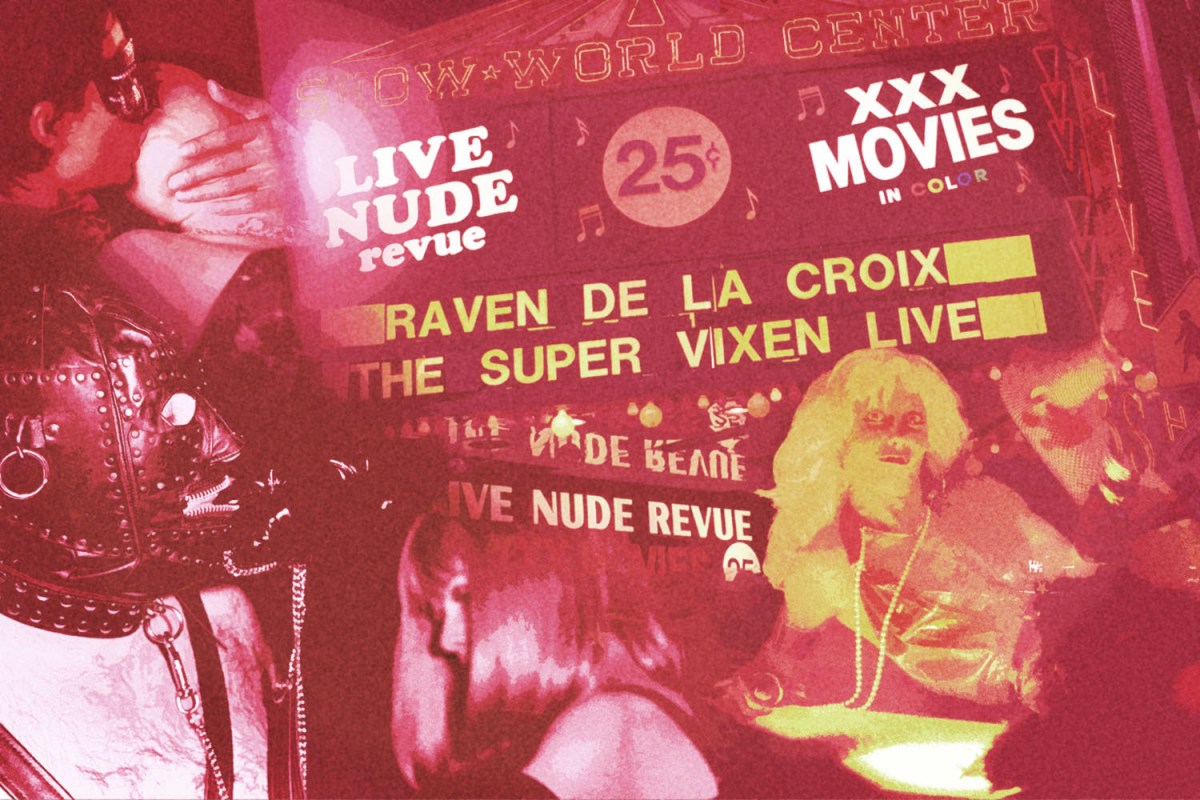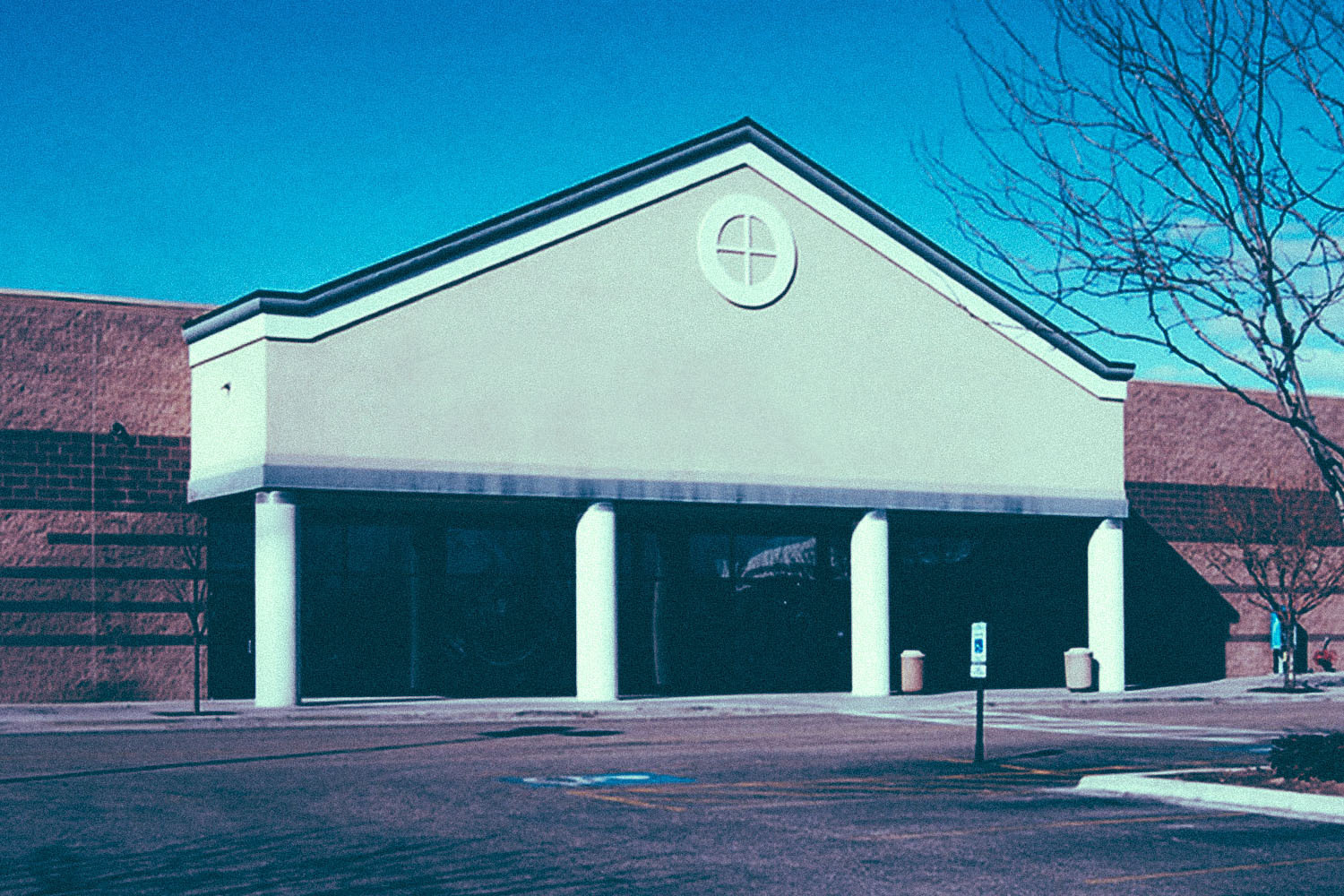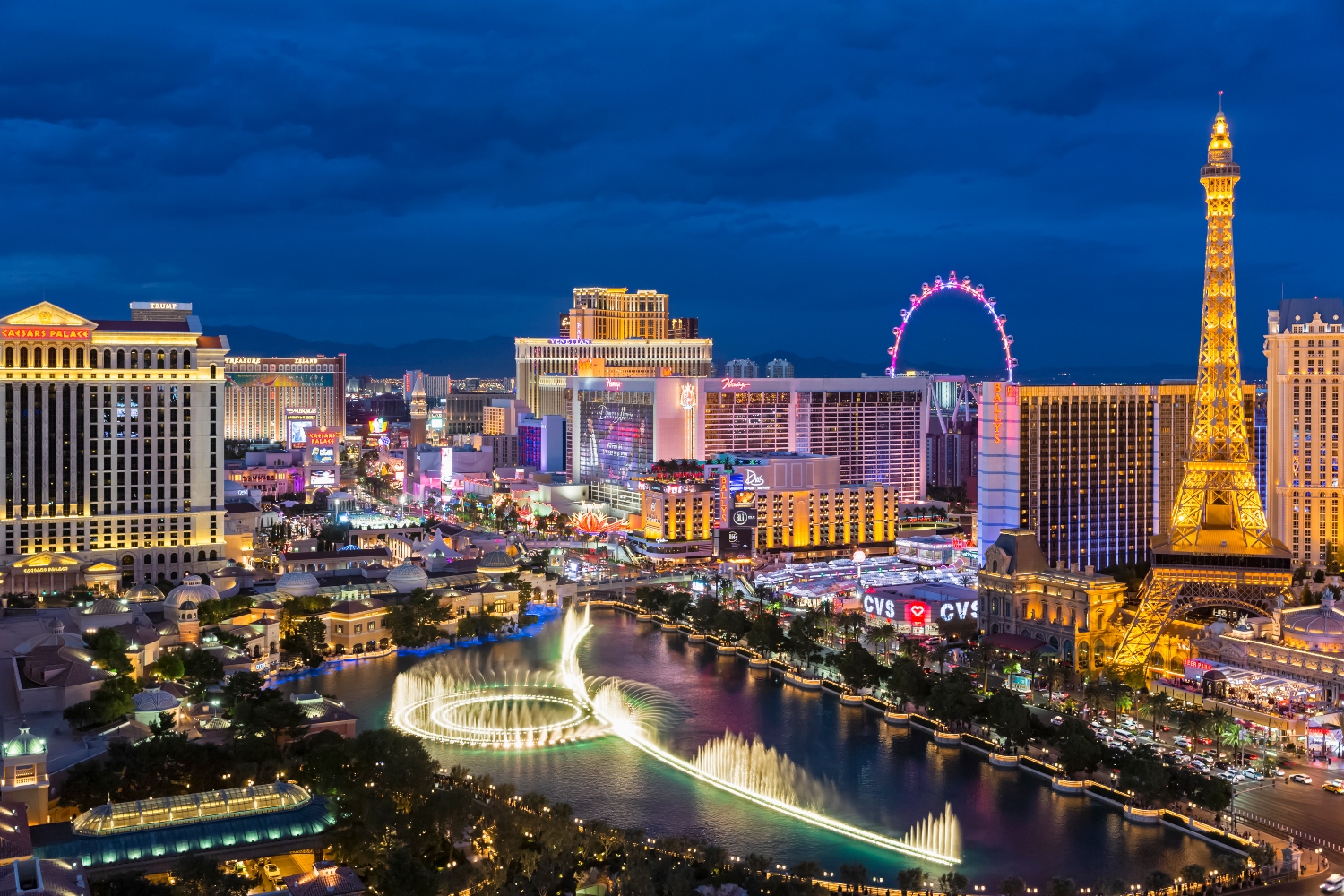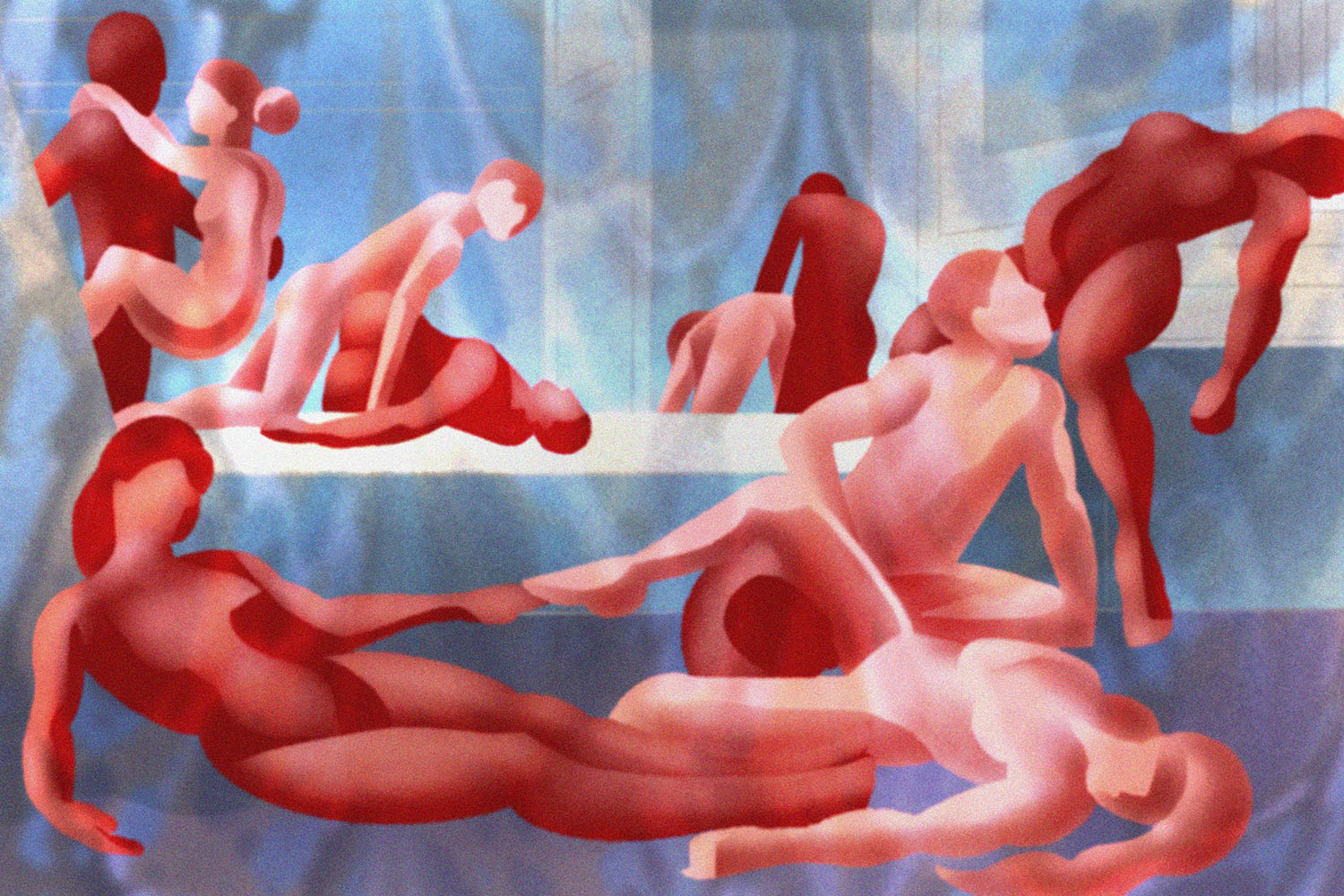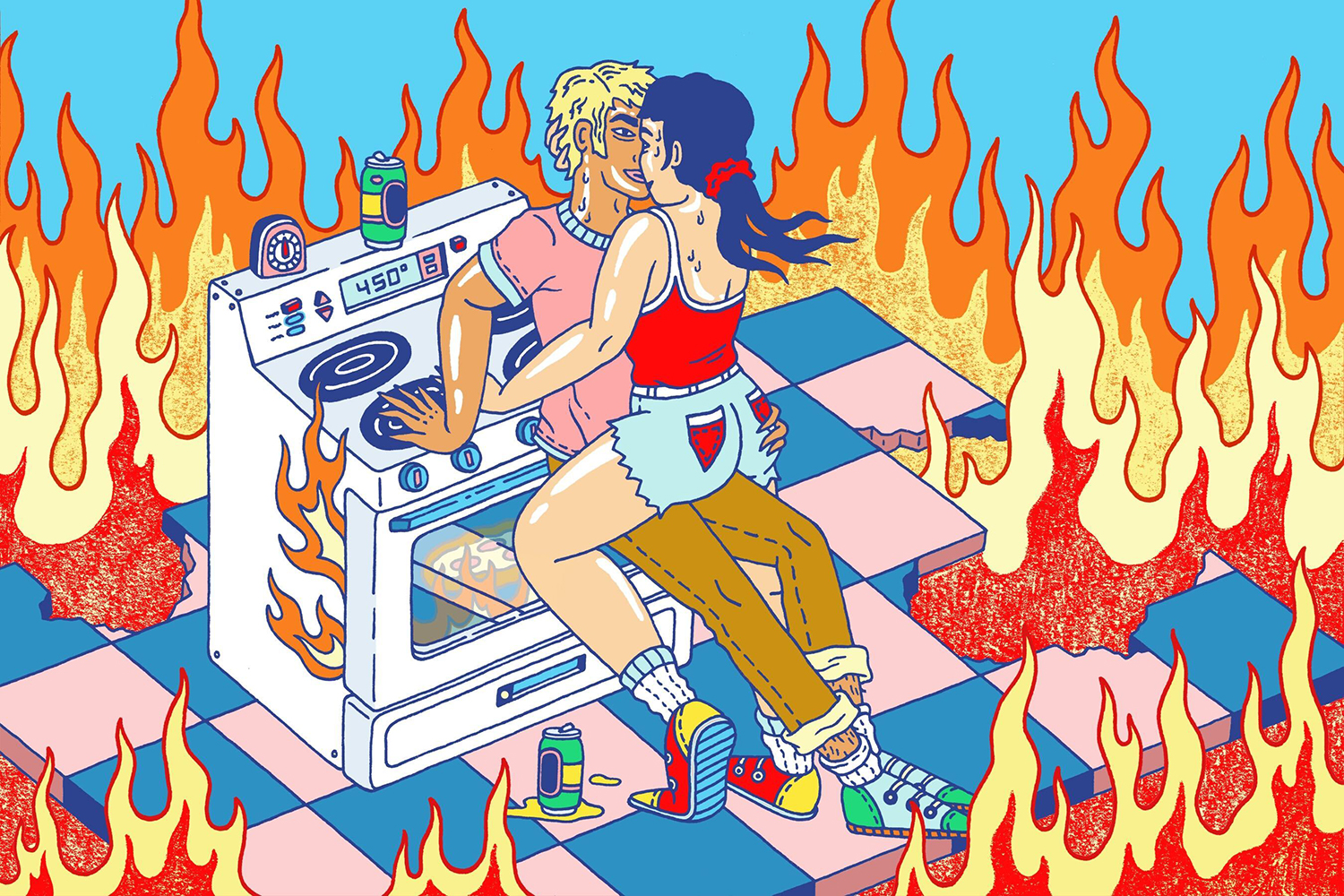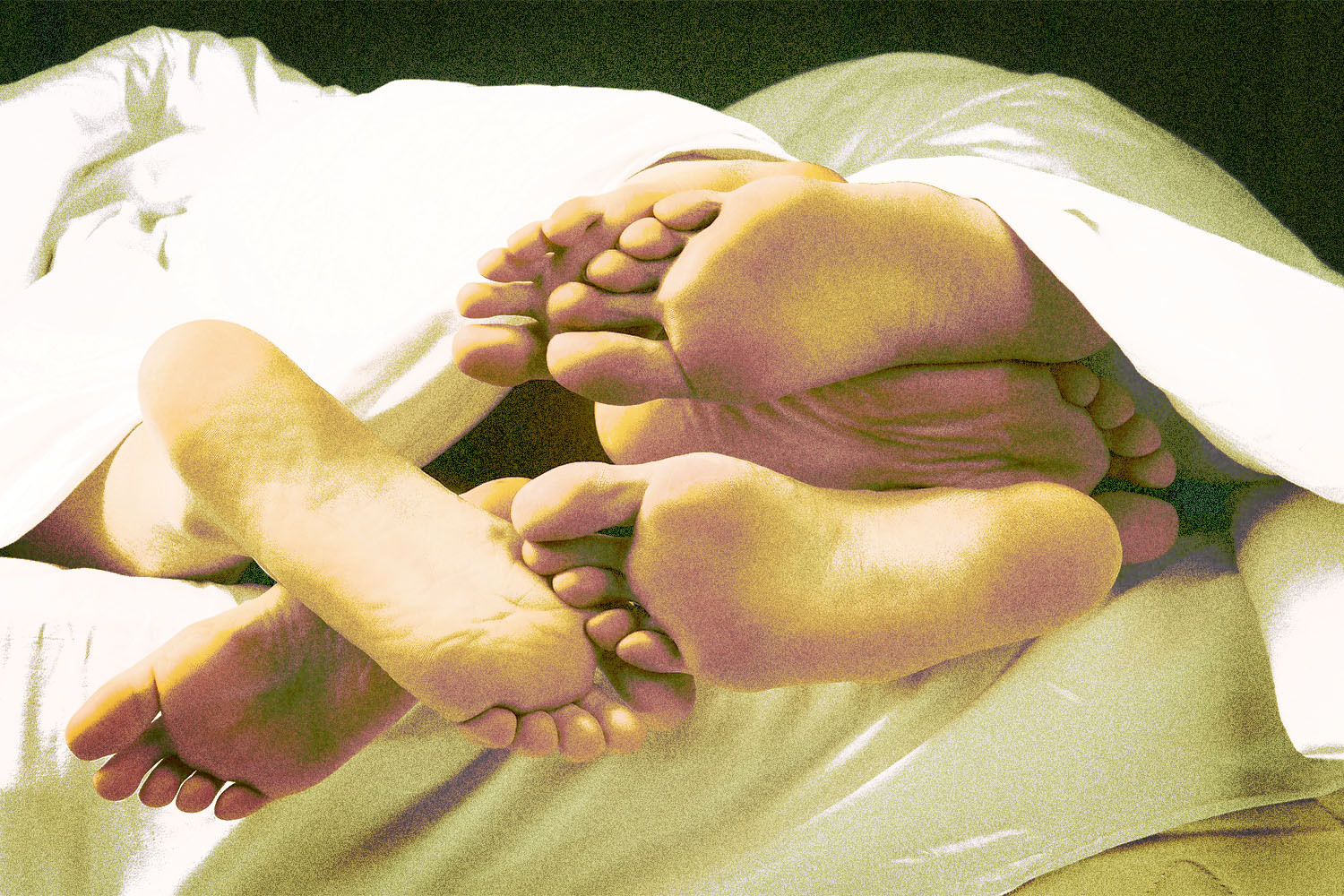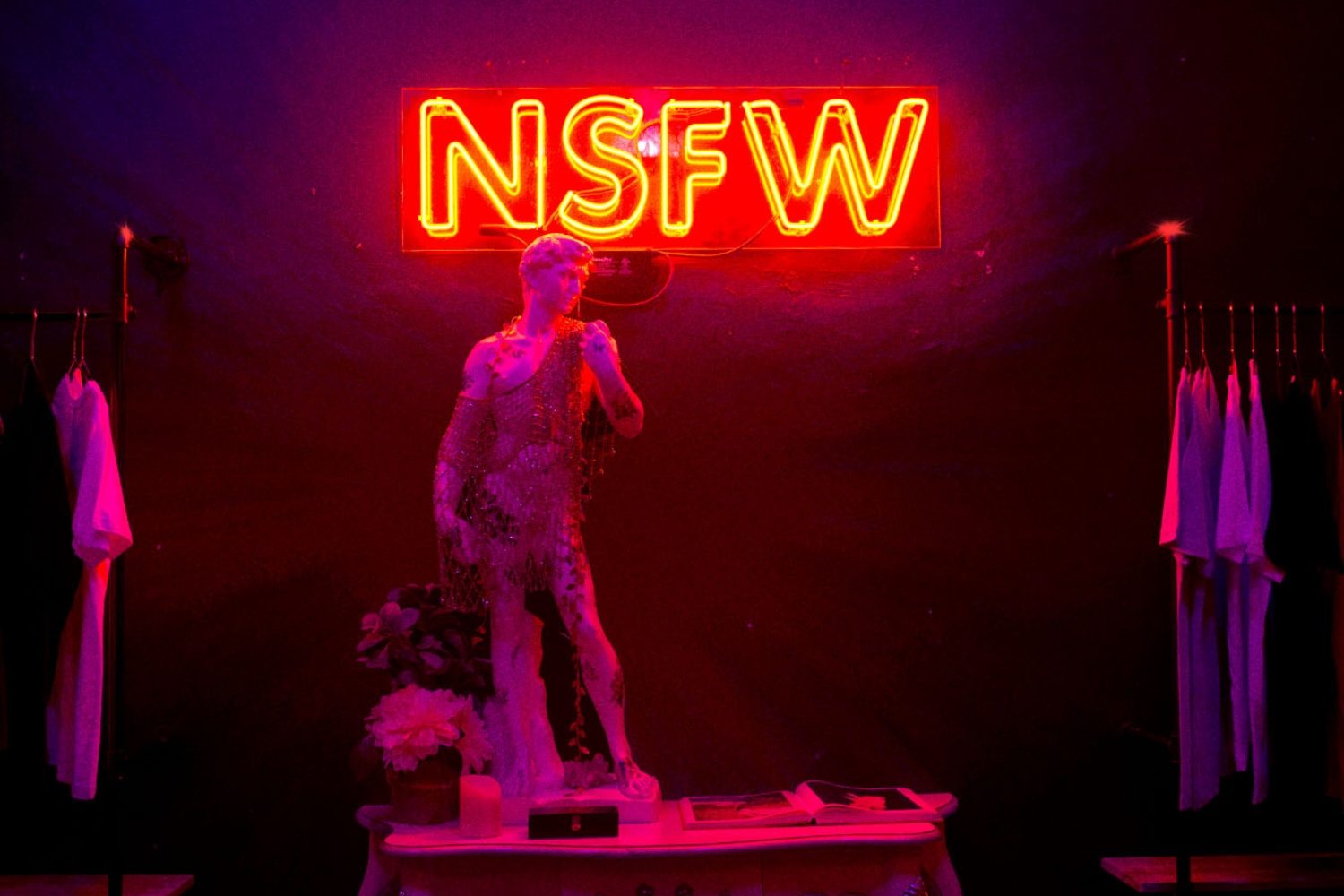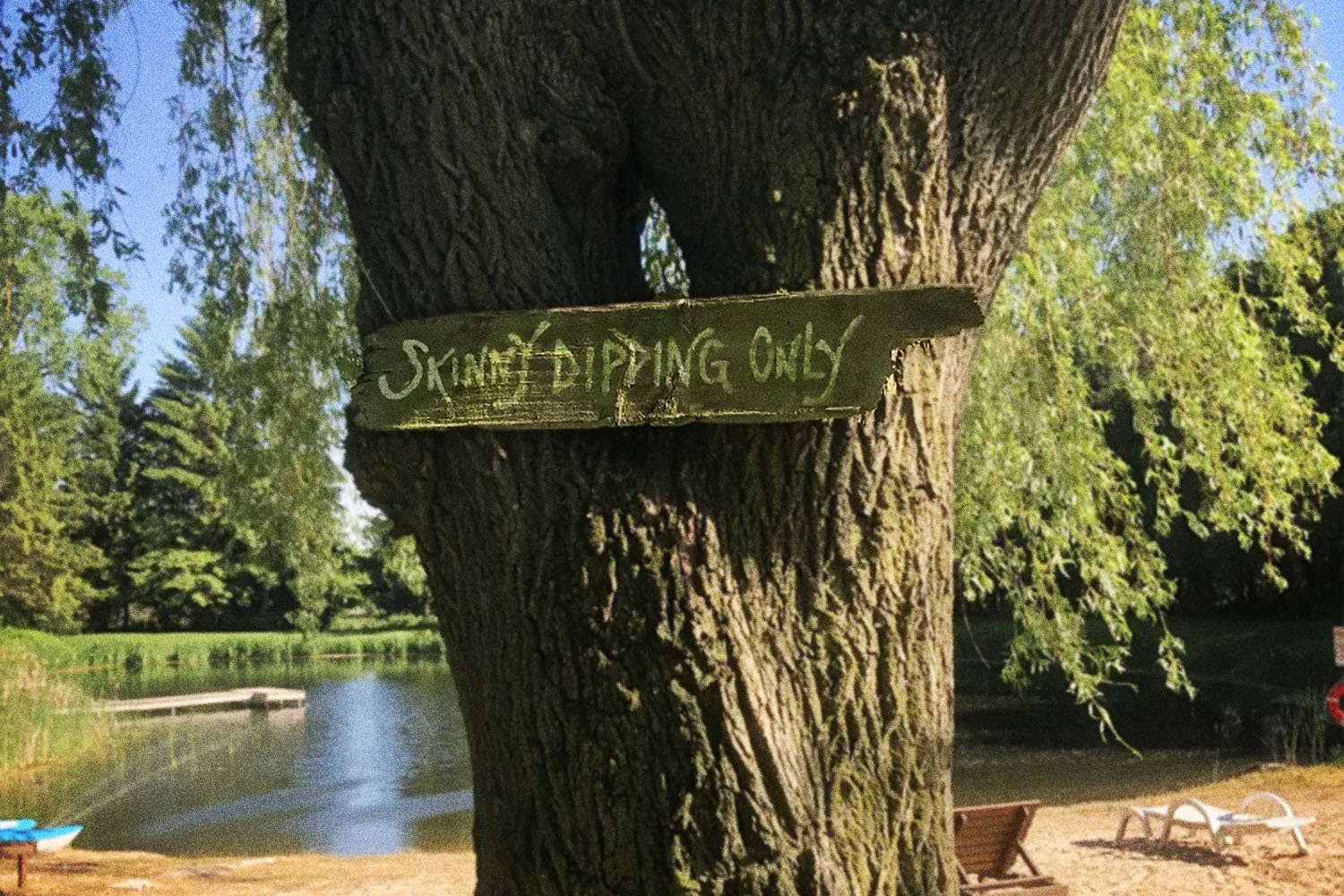Over the last decade, sex clubs and parties have shifted from the stuff of underground lore to an almost ho-hum fixture of modern American life. Not just tabloids, but mainstream lifestyle and culture magazines regularly publish in-depth profiles of prominent clubs and events — like those hosted by Snctm, the notorious high-end society that’s offered the rich (and supposedly famous) venues to enjoy kinky performances and public sex since 2013. What’s more, they print guides on how to find sex clubs, how to act while attending parties and even how people can stay safe if and when they return to the scene after years of lockdown, in the tail end of a pandemic.
It’s tempting to view the recent explosion in visibility of these erotic events and spaces as a uniquely modern phenomenon, to argue that these trendy sex clubs and parties are the novel byproduct of rapidly evolving social conversations around and attitudes towards things like kink, non-monogamy, and open, public displays of sex and sexuality. And it’s true that most of today’s best-known venues for public sexual exploration have only opened their doors in recent years.
But in truth, America has had a sex club and party scene for decades. Older spaces and events may not have looked quite like the ones we have today. And they never got much play in mainstream press or history books thanks to taboos around talking about sex, and especially non-traditional sexual practices. However, they’ve clearly influenced the shape of the modern scene, as have other, even older venues for semi-public and non-normative sexual play. Below, InsideHook peels back the layers of history, one era at a time, to dig into this often neglected sexual history.
Swingers Clubs
Perhaps the best-known precedents for modern spaces and venues, swingers clubs and parties take their name from the swinger lifestyle that emerged in the United States around the end of World War II. Swinging is often associated with “key parties” and “wife swapping,” by now tired tropes used to paint nostalgic or critical pictures of the supposedly free-wheeling sexual revolution that swept across (parts) of America in the ’60s and ’70s. But the lifestyle actually encompasses a grab bag of non-monogamous arrangements, some of which resemble what we now think of as polyamorous relationship dynamics, as well as relatively open group sex.
Early swinging mostly took place at private meetups in couples’ homes. But in the ’60s, a few resorts and retreats where swingers could let it all hang out opened across the nation. Journalist Gay Talese’s 1981 exposé of postwar American sexuality, Thy Neighbor’s Wife, briefly thrust one of these venues, the 15-acre Sandstone Resort in California’s Topanga Canyon, into the public eye. Opened in 1968 by an area couple, the resort reportedly had a utopian vibe, built around the belief that monogamy, among other social and political conventions, was ultimately harmful.
Most swinger spaces were ostensibly members-only venues, primarily serving people partaking in the lifestyle in their immediate area. But a few venues, like New York’s Plato’s Retreat, which opened in 1977, were visible and open to members of the wider public, if they came in as guests. Plato’s actually ran ads on public access television, and got some attention in New York magazine.
The most prominent swingers clubs closed down after only a few years, often thanks to zoning or financial issues. Many smaller venues shut down in the ’80s as well, in the face of the AIDS pandemic, and a wave of social conservative backlash against the mid-20th century sexual liberation. Most retreats that survived this culling, and their successors, now keep a low-profile.
Pop culture now typically portrays ‘60s and ‘70s swingers spaces as dingy, covered in plush and kitsch aesthetics, and ultimately vanilla, heteronormative and perhaps even exploitative. Plato’s notoriously laid out strict no gay sex, no threesomes rules for its patrons and took pains to make sure there were always plenty of young, conventionally pretty women around. Modern swingers are often portrayed as old and dated. (Many modern swinging spaces do skew a bit old, and a few actually dissuade young people from joining, urging them to seriously consider whether they want to be swingers first.) So perhaps it’s understandable that some modern sex clubs and parties take pains to distance themselves from swingers and their spaces — adding to the sense that these new venues and events are something wholly new. But you don’t have to dig far to see the purely organizational and conceptual precedents that open parties at swinger spaces ultimately set.
Kink Clubs and Parties
Although they garnered less mainstream attention thanks to concerns about privacy and legality, early fetish clubs and dungeons popped up in discreet locations across the U.S. in the mid-20th century. Then as now, they offered communal spaces for people to meet others into kink, education events and forums for discussion about how to explore things like BDSM play safely, and shows to watch or parties for people to participate in non-normative sexual practices.
Although most of these early communities were ephemeral and have been lost to history, a few are still influential players in the kink space. Notably, The Eulenspiegel Society, often stylized as TES, which hosts regular BDSM classes and get-togethers across the U.S. to this day, started out in the early ’70s as a regular apartment meetup of like-minded masochists who connected via personal ads placed in underground magazines in New York. But as more and more people in the fetish space learned about the community, it expanded to public venues and opened up to people with other kinks. (TES was oddly public with its largely educational social activities because its founders took a strong activist bent, attempting to break down the stigmas around fetishes and the people who practiced them that forced other groups into the shadows.)
Mainstream culture really started taking notice of America’s kinky sub-currents in the ’80s and ’90s, with fetish gear and dungeons increasingly showing up, albeit usually in a reductive form in pop culture. (This is around the same time TES and other public groups started hosting big conventions.) It’s clear that modern sex clubs and parties have taken either direct or indirect notes from these increasingly well-known and public spaces. Notably, high-end sex parties often bring in kink professionals for either educational events, or to perform erotic tableaus. However, despite this overlap, kink spaces ultimately remain discrete from, and far more specialized than, the sorts of general-interest sex parties and venues that’ve come into the public eye of late.
Queer Clubs and Parties
Throughout the 20th century, bars and clubs opened, mostly in major American cities, to serve the queer community. Randolph Trumbach, a historian of queer social spaces, says that these nightlife spots were primarily a vital venue for people to openly express their sexuality, to meet others and to find joy in safety in an otherwise hostile, dangerous world. However, by the ‘60s and ‘70s many of these spaces had developed back rooms that people could duck off to in order to have semi-public sex however they pleased without leaving safe venues.
The anthropologist Gayle Rubin points out that there was often overlap between queer and kink spaces in the ’60s and ’70s, pointing specifically to Manhattan’s leather clubs and one particular “gay male fist-fucking establishment in San Francisco” she observed early in her academic life.
Although early queer bars and clubs emerged in response to a radically different social setting than sex venues in the modern zeitgeist, their particular blend of conventional nightlife activities with the semi-public exploration of non-normative sex and sexuality set clear, potent precedents.
Nudist Camps
American nudism emerged in the early 20th century, and Brian Hoffman, a historian of nudism in America, notes that from at least the ’30s onwards the leaders of the nudist movement took pains to paint it as an entirely non-sexual practice. They framed nudism as a wholesome and healthy back-to-nature lifestyle, wholly in line with the sexual and social norms of the era. But this was mostly, Hoffman argues, a bid to avoid legal scrutiny, and to foster a sense of broad respectability in an era when even a whiff of sex in public could get you broadly blacklisted.
In practice, Hoffman has found plenty of evidence of nudist communities that, as early as the ’40s, embraced sexual liberation and free love exploration on their campuses. Elysium Fields, a nudist camp that operated in Topanga Canyon in the ’60s, was notorious for alleged free-wheeling public sexual exploration — which may have had an influence on the area’s swinger scene.
“I believe there are camps where things go on at night,” Hoffman says, coyly. Back in 2015, Playboy profiled a slightly fringe nudist community that still engaged in what sounds like far more traditionally swinger-style sexual exploration. But mainstream nudists don’t like to acknowledge anything sexual as a part of, or inspired by, their chaste, healthful lifestyle.
Bathhouses
From the turn of the 20th century onwards, gay men in American cities also turned to bathhouses as a venue for semi-public sex. (No one’s entirely sure when this usage developed. New York’s first clearly documented anti-sodomy raid on a bathhouse dates to 1903 at the Ariston Hotel Bath, but local facilities had a reputation as bastions of queer sex dating to at least the 1880s.) By the ’50s, some newly founded bathhouses were explicitly and almost exclusively queer venues.
Dennis Holding of the North American Bathhouse Association explains that the general protocol in these spaces has been consistent for decades: Men use whatever facilities a bathhouse has, like a pool or sauna, then sit partially or fully exposed in a room with the door ajar. They make eye contact with people who walk by and either wave or nod them in, or to keep on moving. Then, whatever happens in the room happens. Like club spaces, this was another vital venue for queer sexual safety and exploration. But Holding notes this is a far cry from the vibe of either mid-20th century or modern sex clubs and parties, so he doubts bathhouses had any influence on them.
No modern sex clubs or events are clamoring to claim a connection to bathhouse sex, either, as they’ve taken on a reputation as old and outdated venues as well. Many closed down in the face of the AIDS pandemic, the sexual panics and declining business that followed. (Holding and others are trying to keep them alive and relevant for future generations, though, and some young gay men do still use them for sex.) But Plato’s Retreat notably opened on the site of a recently closed prominent gay bathhouse, and featured plenty of water fixtures and themes, suggesting some awareness of and reference to bathhouse culture. A few scattered accounts also suggest a broad awareness among people involved in mid-century heterosexual sexual liberation movements, like swinging, of bathhouses as a model for exuberant sexual exploration.
Molly Houses
Taking a leap across the Atlantic, and far back in time, Trumbach has documented the existence of dozens of Molly Houses in England, France and the Netherlands, from at least the early 1700s to the mid-1800s. These were alehouses or cafes known for serving people we’d now broadly call queer men, offering venues for dancing and general merriment, and opening up back rooms for patrons to engage in either private or public sex, however they liked. (The houses take their name for the slang term of the era for an effeminate male prostitute. However Trumbach notes that as far as he can tell much of the sex that took place in these houses was non-transactional.)
The most famous Molly House, Mother Clap’s of London, allegedly hosted up to 40 guests in its back rooms every night in the mid-19th century, and kept security at the doors to ensure the safety and privacy of all who frequented the premises, which sounds a lot like the venues that came a century later.
No one InsideHook consulted for this article has seen any evidence of Molly Houses in America in that era. But Tom Foster, historian of U.S. sexuality, says that American newspapers regularly reported on London’s Molly Houses, so “we know some people heard about them at least.”
Alternatives to Dedicated Spaces
Molly Houses vanished in the wake of a series of intense police crackdowns in the mid-19th century. These raids and legal cases were part of a widespread, if inconsistent, push to enforce increasingly codified and legally-backed sexual norms in the public sphere. That broad anti-queer and anti-public sex environment may explain why there is a long gap in the historical record between the disappearance of these venues, and the emergence of 20th century spaces. Anything that existed in the era was likely deep underground, off any notable radar.
However, around the same time Molly Houses disappeared, nations across Europe and North America started to build public restrooms — also out of a concern for public morality and propriety. (Prior to this era, Trumbach explains, “men urinated in public streets by just turning to face a wall” and letting ‘er rip. “This was deemed too shocking for respectable women to see.”) These early public restrooms were often self-contained cottages or entirely closed off lines of stalls. So, gay men especially took to picking people up in bars, then retreating to public toilets to have semi-public sex. Trumbach notes that, for several decades, the slang term for public sex, and especially queer public sex, in England at least was “cottaging,” after self-contained toilets.
Authorities shut down public toilets around the mid-20th century, he adds, in no small part because concerns about public sex and drug use transformed these public morality solutions into a newfound source of moral panic. No one’s sure if the timing is related, but it is somewhat conspicuous that sexual club and party spaces grew increasingly visible in the historical record right around the same time that public toilets faded out of the sexual orbit. It’s also worth noting that, even at nightlife venues that don’t explicitly or tacitly condone onsite sex, plenty of people still get busy in bathroom stalls, because even if they’re not as private as 19th century cottages, they’re still one of the only semi-private places folks can slink off to.
No one InsideHook spoke to for this article is aware of any specific venue for public sex in the historical record before Molly Houses. But Trumbach suggests this is just because they weren’t needed. For most of human history, if you wanted to have any type of sex, you either did it in the privacy of a home, or out in nature or a park if you didn’t have enough privacy at home.
Trumbach adds that, even as dedicated spaces for public sex emerged in the mid-20th century, he and others observed many hookups or orgies in parks and woods. (“Not to be too revealing,” he says, “but when I was a younger man living in Chicago there were spots in the parks where, even in the middle of winter, group sex took place regularly.”) And parks remain a hotspot for public sex to this day — as many teens desperate for a space to explore sex away from adult eyes know.
Ultimately, Molly Houses, queer clubs, bathhouses and every other venue for public or semi-public sex emerges as a response to a specific need. Whether it’s the need to create a safe space for a form of sexual expression experiencing a brutal crackdown at the hands of a bigoted legal system, the need to build a space for community around a niche or inherently public sexual proclivity, like forms of kinky or group sex, or the need for a venue for pure, open, general sexual exuberance and exploration, every space, whether explicitly or implicitly, draws lessons from those that came before it, or developed parallel to it. Nothing is new under the sun. But they are all windows onto unique chapters in the ever-evolving history of human sexuality.
The Charge will help you move better, think clearer and stay in the game longer. Subscribe to our wellness newsletter today.
